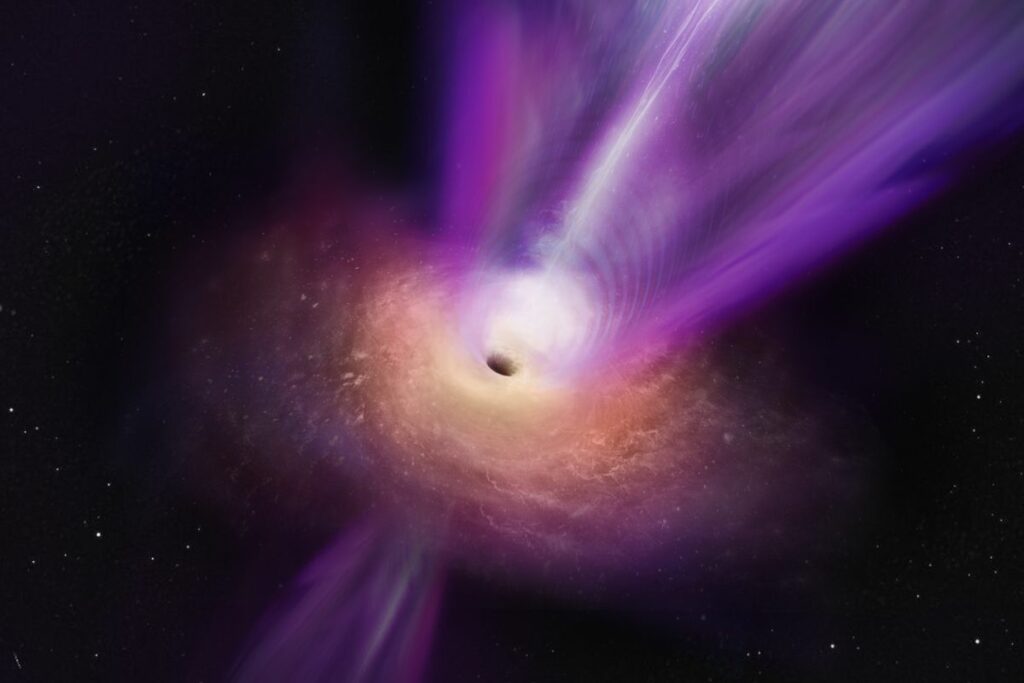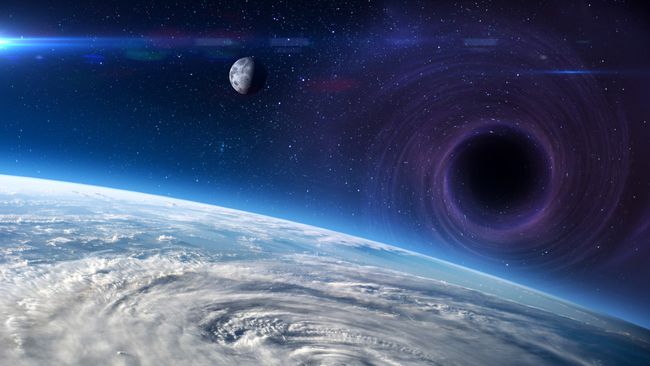A ‘Primordial’ Black Hole Could Pass Through Our Solar System Every Decade
“If there are lots of black holes out there, some of them must surely pass through our backyard every now and then.”
These micro blackholes, if existent as certain theories propose which they formed right after the Big Bang, should pass through our solar system at least once a decade as new research indicates and when doing so they would leave behind small gravitational traces that astronomers could easily observe.
That is why many researchers believe that it could be possible for similar gravitational disturbances to be discovered, which can open a door towards solving the mystery of dark matter – an as-yet undiscovered substance, which is estimated to account for roughly 85 percent of the entire observable universe’s mass.
Other theories assume that dark matter is composed of previously unknown particles and even though scientists think there is strong evidence to support this notion they have not been able to locate them. In contrast, there are some theoretical approaches that try to apply that the dark matter is made of ‘primordial’ black holes formed in the early stages.
Earlier research shows that about 86% of the matter in the universe is dark matter which is deduced from its influence on the visible matter and light. Nevertheless, a lot of people are still in the dark about what exactly it entails.
Black holes are referred to their very strong gravitational pull that is in fact said to be of a nature that it can trap light or anything coming closer to it. That is where black hole stays, if it is not currently engaging with other objects in space.
Scientists have discovered different types of black holes in use ranging from stellar black holes those are five to ten time the mass of the sun to supermassive black holes those are million to billion times the mass of the sun. This new theory is, however, based on formation of other black holes called the primordial black hole which could be as small as an asteroid with a mass of between 110 billion to 110 million billion tons (100 billion to 100 million billion metric tons).
Black holes that have been under consideration are at least ten billion times less massive than the Sun and do not extend beyond the size of a hydrogen atom, said Sarah Geller, a theoretical physicist at the University of California, Santa Cruz in an interview to Space. com.

Black holes are stars which have densified and collapsed under their own gravity well. Till date, based on earlier findings, there was a condition in the universe that immediately after big bang, and before the universe could expand further, random variations in densities of matters led to formation of black holes due to increased density in certain areas.
I read earlier studies that suggested that the so-called PBHs, or, to be more precise, those of them that have survived up to the present epoch, can account for the matter component of DM or even are DM in their entirety. Based on this premise, the new study sought to establish how frequently these so-called ‘primordial black holes’ may cross through the solar system and if they would induce observable impacts on neighboring objects.
“There are many black holes in the universe and some of them from time to time enter our solar system,” said co-author Sarah Geller.
To set the stage, the researchers thought about how a scenario playing out in the following ways: what would happen if black hole hit the earth, moved through the atmosphere, or made a crater on the moon. They even went a step further to assume the impact that a tiny black hole could make to a person. But Geller continued, “Each of these ideas had the same flaw, a person, the moon, Earth are small targets in cosmic space and the likelihood of a black hole in crashing into them are very small.
However the team understood that a bigger system was required in which black holes could pass more frequently and yet in which objects could be accurately measured. They started pondering on the precise arrangement of objects in the solar system; this with regard to orbits. Basically, the attractive force of a primordial black hole in theory may cause noticeable oscillations in the motion of inner planets such as Mercury, Venus, the Earth and Mars.
In their work they concluded that if they do exist then primordial should be so typical that one undergoes the inner solar system once in a decade. The researchers explained that such flybys might have already happened because modern equipment became possible to detect these interference.
However, Geller was keen to explain they are not suggesting that they are absolutely certain that PBHs exist, that they make up the majority or even all dark matter, or that there are one in the solar system at present. However, this paper would like to suggest that if the examined PRIMBLACKS are indeed existent and are indeed majority dark matters, then one should pass through the inner solar system every one to 10 years.
The results rely on relatively crude computer simulations that are insufficient for modelling real data on the Inner Solar System orbits accounting for perturbation. To further improve the accuracy of their work, the scientists intend to use contacts with other specialists in solar system modeling, for instance, with the Paris Observatory that has significant experience in employing elaborated simulation techniques.
Co-author Benjamin Lehmann, a theoretical physicist at MIT, said that follow-up observations would then be required in order to verify signals once they have a complete model to search through real data. Geller also noted that while if a P. S it was isolated and identifying it by its gravitational impact may not clearly identify it a P. B. H to exclude other interaction possibilities more observations could be insightful. While small asteroids, for instance, are identified with the help of telescopes, if a person tried to observe a tiny black hole directly, he or she would see nothing at all.
The scientists detailed their findings Sept. 17 in the journal Physical Review D.
Do not forget to share your opinion with us to provide you with the best posts !




0 Comments